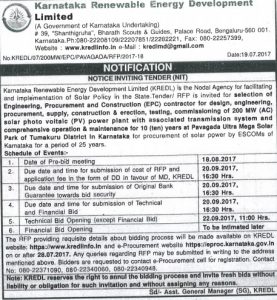ALSO READ: INDIA IS BETTER PREPARED FOR DISASTERS
Thrust came basically from central and state governments and their respective policies besides improved tariff competitiveness of wind and solar power. Other clean sources including tidal and geothermal energy are, however, too costly to be used in India. Minimum possible tariffs for solar and wind power now stand at Rs 2.44 and Rs 2.43 per unit respectively while the average rate at which states buy non-renewable power is Rs 3.53 a unit. This is the game changer!
Ensuing year (2018) also saw over 10 GW of project awards by central and state distribution utilities, which provide healthy visibility for renewable capacity addition in 2019 and also FY20. Ministry of new and renewable energy plans to tender 60 GW of solar and 20 GW of wind capacity by March 2020 to meet India’s target of 175 GW renewable energy by 2022 thereby leaving a two-year window for project completion within the stipulated period; 9 GW and 20 GW of renewable capacity is likely to be added in FY19 and FY20 respectively.
ALSO READ: CRACKERS TAKING TOLL ON CHILD HEALTH
Experts believe 2018 was a landmark year for domestic solar equipment manufacturers, who received support from the government’s imposition of the safeguard duty. Safeguard duty created a level playing field for manufacturers to showcase their capabilities, and bring in disruptive research and development.
ALSO READ: FOOD-WATER SCARCITY TAKING WILDLIFE OUTSIDE THEIR TERRITORY
There are, however, a few who believe regulatory uncertainties, such as safeguard duties, are negative for industry and can impede the growth. The patch of uncertainty can make things dicey for the initial seven-eight months. The upcoming year might witness peak growth of previous five years provided there are no regulatory surprises ahead. Certain segments including commercial and industrial, and open access, are likely to perform well despite challenges.
That apart, the sector, however, remains exposed to near-term challenges arising from rising interest rates and transmission network availability. Average bid tariffs discovered in the auctions for wind and solar power projects in 2018 have so far remained between Rs 2.6 and Rs 2.7 per unit.
Irregular payment pattern of state discoms is a major nuisance! Particularly for wind and solar power projects. Projects awarded by central nodal agencies and discoms in states including Gujarat are, however, relatively insulated from this impediment.
Total Views: 2,56,730


